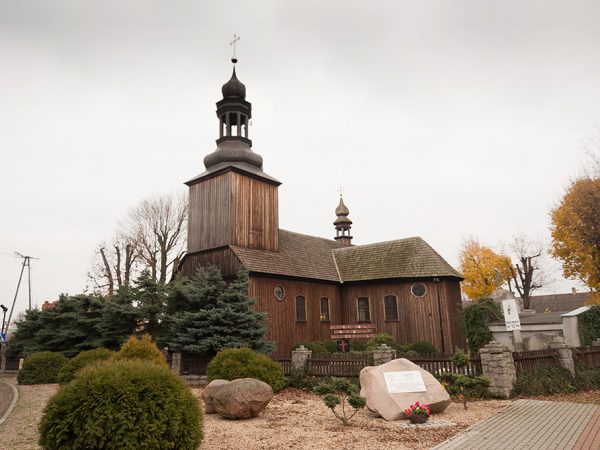Wooden monuments
The Madonnas of Czermin
Two exceptional paintings of St. Mary deserve a special attention in this church. The first of them is put in the Rococo-style main altar which dates to the second half of the 18th century. In the very centre of this extremly decorative, architectual case, there is a miraculous image of the Mother of God of Czermin. The painting finished in 1662 comes from the former, now gone, church. Therefore, it is older than the altar where it was later put.
The Madonna is presented in the style of Our Lady of the Snows (compare with the example of the Mother of God from Ociąż). The thing that distinguishes the artwork from Czermin is the change of sides. St. Mary who is holding the Child on Her right arm instead of the left, is in fact a mirror image of the original. This was a quite popular procedure in modern times, especially when it came to copying of famous paintings.
The painting is an object of special worship. Madonna listens to pleas which two tables with votive offerings on the sides of the altar bear witness to.
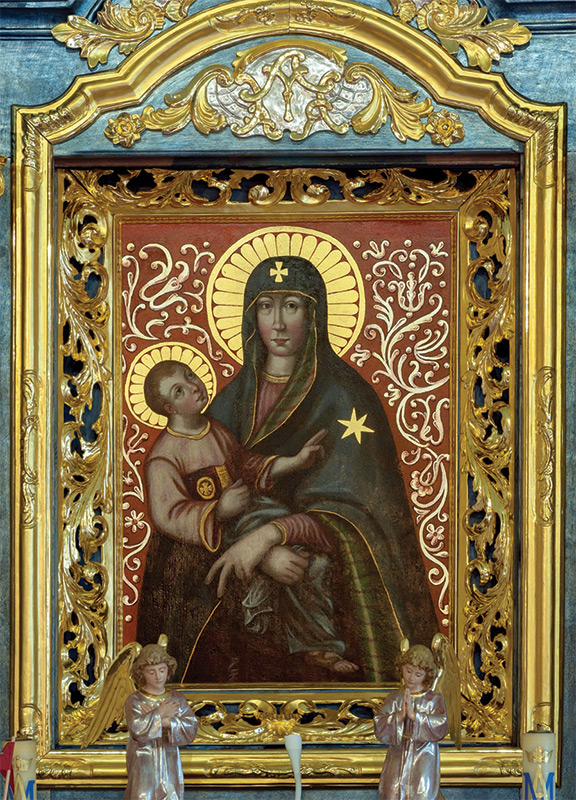


The second Mother of God with Child which one has to notice is the oldest work of art in the church of Czermin. It dates to the Gothic period 1470, when the artists created their works anonymously. The artist who sculptured in soft, lime tree wood was definitely inspired by the Book of Revelation. The work, inspired by the divine spark, shows detailed and delicate robes, hands and faces.
- Like the naked child which She is holding on Her hands, St. Mary is wearing a gold crown on Her head – as it suits the true Queen of Heaven and Earth.
- Beautiful Madonna embodies the woman of the Apocalypse. Her lavishly draped golden clothes make her look as if she is “clothed in the Sun”.
- “The silver moon beneath her feet” /Revelation, 12, 1-2/ which was imagined in a very original way, also focuses attention. It is not a typical “crescent” but a human face with its profile turned to the ground.
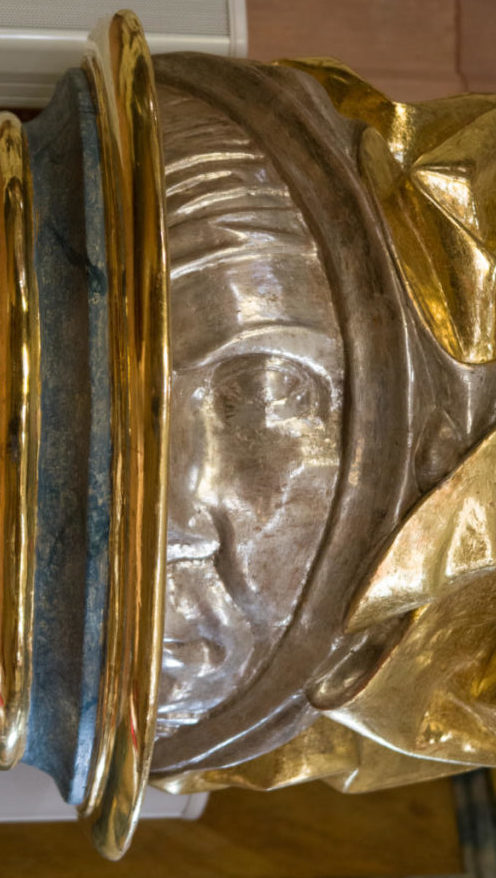
The way of St. James
The patron saint of the church is St. James the Apostle, whose image can be found in the main altar. St. James was called upon by Jesus to become one of the first apostles. His name means “to protect”. As an entrusted Jesus’ disciples he witnessed the transfiguration on mount Tabor. He died in 44 by beheading with sword. He was the second martyr after St. Stephen. In the 7th century, the relics of St. James were brought from Jerusalem to Spain, because according to legend just after the pentecost, St. James moved there. They were laid in the place which is now called Santiago de Compostela. Campus stellae means the field of the star, as the relics are said to have disappeared, and then been found again in the 9th century by a bishop who was led by a miraculous star. Santiago on the other hand means St. James. In time the place of his burial have become a popular aim of pilgrimages. The symbol of the first pilgrims was a shell which resembled an open hand which was said to symbolize an openness to good deeds.
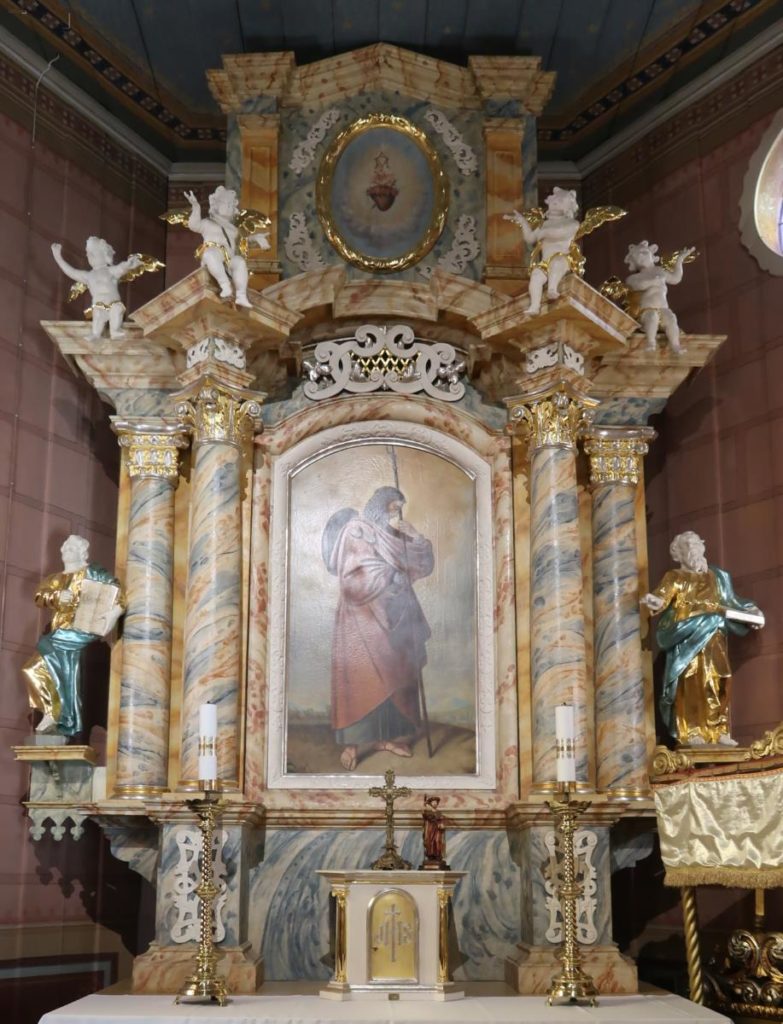
The relation of James with the shell comes from a medieval legend. After his death in Jerusalem, James’ body was laid on a ship without oars and it survived 7 week long journey. When the ship approached the shore of Spanish Galicia, a wedding was taking place there. The groom was sitting on a with horse, which ran out tho the see when it saw the boat. After a while, both of them emerged from the sea all covered with shells, and the apostle’s ship sailed on.
I baptize you...
God’s mercy reveals itself through the possibility of erasure the original sin during the ceremony of baptism. This sacrament takes place by a baptismal font which is indispensable element of every church. The one in Czermin is characterized among others by its form. It was made in the shape of a cup, which consists of a basin with a cover, a pillar and a foundation. On the cover there is an open book with a cross. The baptismal font is additionally enriched by a backboard (a sort of a decorated wall), in the upper part of which there is a scene of Christ’s baptism.

Benches with a cartouche
A historical object which usually does not draw attention of the faithful are benches. The faithful value their comfort, and they often constitute an example of a very good carpentry craft. Benches from the church in Czermin were made in an exceptionally decorative and diligent way. Additionally, first of them were decorated with a stylized floral cartouche with letters and a galero, on the sides of which a date of the origin oh these works 1773 was put. They also have extremely decorative side walls which create a shape of carved spirals, a floral or akin to shell ornament.
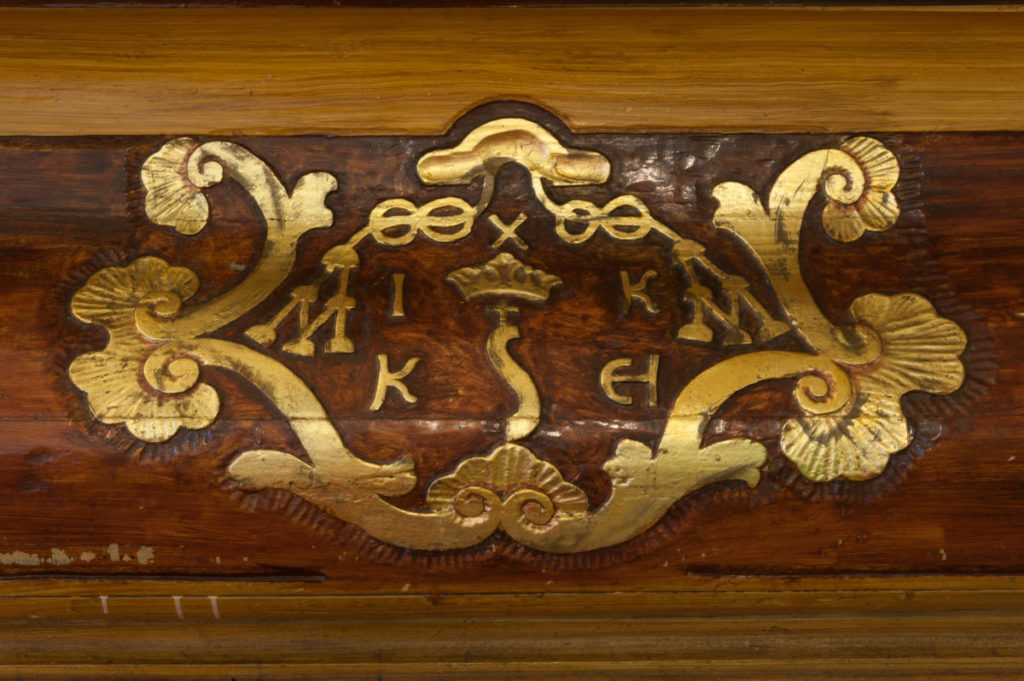

St. Joseph – the patron saint of craftsmen
In the main altar made around 1700, we can find an image of the Holy Family. Especially interesting is the figure of St. Joseph – the patron saint of the diocese of Kalisz. Mary’s husband was a carpenter, that is why he is holding an ax in some paintings. Nowadays he is worshiped as a patron saint of craftsmen. The worship is an expression of understanding and respect to working people and the role of professional work in spiritual life. St. Joseph spent his whole life as a carpenter, fixing and creating many useful objects. Work has become the source of his sainthood, he was a mystic not through contemplation, penance or compassion, but through a daily work. It made him a saint because he worked solid, quietly and humbly.

Indulgences
last Sunday of July (St. James the Apostole) and March 19 (St. Joseph)





